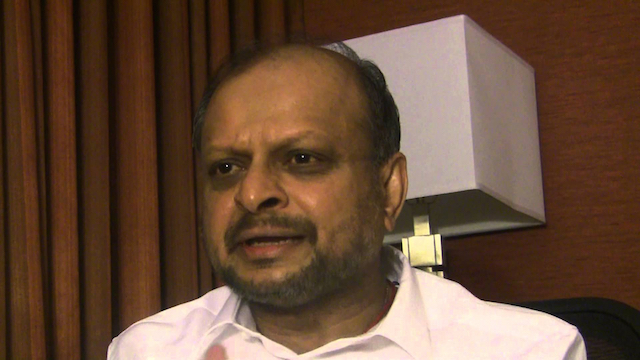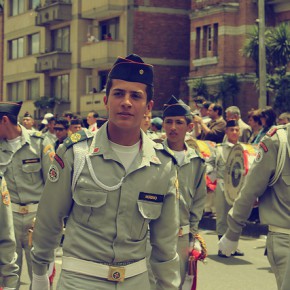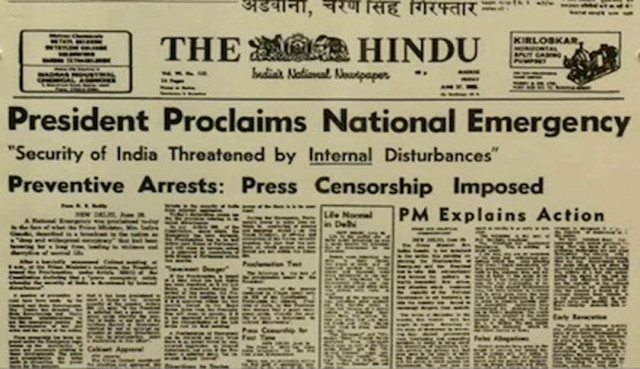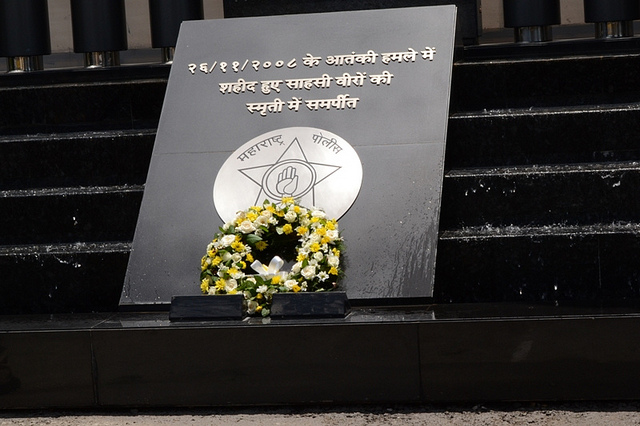When I step out of the rain and into the restaurant, Visuvanathan Rudrakumaran is already waiting for me. Though I’m seven minutes early, I arrive to find the exiled Sri Lankan lawyer, known to his compatriots as Rudra, sitting at a corner table and peacefully watching the deluge outside.
We’re within walking distance of several Sri Lankan restaurants, but we meet at Rudra’s suggestion at Saravanaa Bhavan, a South Indian eatery on Lexington Avenue and 26th Street. This corner of Manhattan, affectionately called “Curry Hill,” is peppered with restaurants boasting the regional cuisines of India and its neighboring countries. Saravanaa Bhavan specializes in the cuisine of Tamils, an ethnic population with large numbers in India and in northern and eastern Sri Lanka, the teardrop-shaped island off India’s Coromandel Coast.
Rudra is Tamil; for culinary, linguistic, and political reasons, he would prefer to eat at the Indian Saravanaa Bhavan than at a Sri Lankan place, which would serve the cuisine (and, potentially, the politics) of Sri Lanka’s ethnic majority, the Sinhalese. The minority Tamils, led by the militant separatist Tamil Tigers, fought for 26 years for an independent homeland, dubbed Tamil Eelam, in Sri Lanka’s north and east. The Tigers’ tactics, including the invention of the suicide vest, made them a formidable rebel force and landed them on over 30 countries’ terrorism lists. But the Sinhalese-run military finally ended the war in 2009 by annihilating the Tigers’ top leaders—and some 40,000 Tamil civilians, according to the UN—in a final battle around the coastal town of Mullaitivu.
Though he has lived in New York for over 30 years, Rudra has stayed intimately connected to Sri Lanka’s civil war and its ongoing aftermath. During the war, he served as a legal advisor to the Tamil Tiger boss, Vellupillai Prabhakaran. Now, he is Prime Minister of the Provisional Transnational Government of Tamil Eelam (TGTE), the first government of its kind in the world. Headquartered in New York, the TGTE continues to peacefully assert what the Tigers asserted violently: the right to a Tamil homeland in Sri Lanka’s north and east.
I first heard of Rudra during the year I spent as a Fulbright Scholar in Trincomalee, a majority-Tamil town on Sri Lanka’s eastern coast. My Sinhalese friends saw him either as a terrorist or as the foolish figurehead of a lost cause. My Tamil friends revered him. I sat down with Rudra at Saravanaa Bhavan to learn what motivates him as Tamil Eelam’s current standard-bearer, and to try to understand what drew him, a lawyer and naturalized American citizen, to aid an organization his adopted country labels “terrorist.”
We shake hands as he rises to greet me. “Vanakkam,” I offer, eager to flex my atrophied Tamil. “Vanakkam,” he answers with a raise of his eyebrows and a surprised laugh.
As we sit down, I search for a conversation starter. “I had a friend in Trincomalee who told me the Tigers ran really delicious restaurants.”
“Oh yes. Mr. Prabhakaran loved food,” says Rudra of the deceased Tiger leader. “If you make me start talking about him then I won’t stop! That’s what my wife says.” He scans the menu and chuckles. “When I met him the first time, we had a luncheon and I think I casually said I like very spicy goat meat curry. And so the next time I went there, he made that curry!” He speaks with the enthusiasm of a high school punter recounting his friendship with the all-star quarterback.
“They call him a ruthless leader, but when I met him he was clean shaven and very respectful,” Rudra continues. He rubs the half-inch-long stubble on his chin. “If someone had come into the room and picked who was the terrorist, they would have picked me!”
While I juggle the shock and—I’ll admit it—the thrill of so casually discussing Prabhakaran, a man who was once one of the world’s most wanted terrorists, the waiter comes to take our order. “Do you like spicy things?” Rudra asks, a common question for an American dining with a Sri Lankan. I do, and order the Mysore masala dosa at his suggestion. Rudra orders his usual thali plate, a collection of various curry bowls accompanied by a mound of rice.
I’ve read enough about Rudra to know that he is one of a handful of intellectuals who think of Prabhakaran’s death on the last day of the war as merely alleged. Eager to avoid the always unsatisfying Prabhakaran conspiracy talk, I turn the conversation to Rudra’s last visit to Sri Lanka. It was 2004, he says—the Indian Ocean tsunami had just killed over 30,000 Sri Lankans, and the Tigers were in a rapidly disintegrating truce with the government. I ask if he got a chance to visit Jaffna, his hometown. Before the war, Jaffna was a nexus of Tamil civilization, whose landmarks included one of the largest libraries in Asia and a beautiful clock tower. The library was burned by a Sinhalese mob a year before Rudra left Sri Lanka, but the clock tower, though severely damaged in the war, still stood when I visited in 2013.
“I didn’t go back,” Rudra says, shaking his head. “Jaffna was under the control of the Army at that time. And the thing is, we thought we’ll liberate Jaffna in a few months and then go back.” As it turns out, the Tigers never did liberate Jaffna after that.
Rudra tells me how he first left home to pursue a law degree. While most Sri Lankans gravitated toward the UK for higher studies, Rudra was drawn to the US for its strong tradition of constitutional law. “I was fascinated by the Bill of Rights especially,” he explains. Soon after Rudra left, anti-Tamil pogroms broke out across Sri Lanka in response to the Tigers’ first high profile act of violence, the bombing of an Army convoy near Jaffna. Like many Tamils, Rudra became an exile, both afraid to go back and convinced that he could be more useful by advising from abroad.
https://www.youtube.com/watch?v=vDMAh9flF9E
Now, Rudra’s name is on the Sri Lankan government’s terrorist list, which he dismisses with a wave of his hand. “They put every Jack, Tom, and Harry on that list—they just took the names of the first parliament of my transnational government,” he says. Seeing the puzzled look on my face, he clarifies. “People consider it as a badge of honor!” He chortles. “Really! The second parliament members are not on that list for some reason, and they feel really bad!”
He stops suddenly to take a phone call. I catch a few words of his fast, looping Tamil, and it seems he’s giving orders. He puts down the phone and continues, intent on making his point. “For the government of Sri Lanka, any Tamil who talks about human rights is a Tiger, a terrorist,” he says.
I make the point that beginning in 1997, any Tamil who affiliated with the Tigers was considered a terrorist by the US government as well. Since their rise in the 1980s, the Tigers conducted around 200 suicide attacks, including a bombing that killed Rajiv Gandhi, the Prime Minister of India and an ally of the United States. Rudra was living in New York at the time, and he says he wasn’t concerned for his safety here. As a lawyer, he challenged the “terrorist” label in American courts. Eventually, the Supreme Court ruled that he could promote the Tigers independently in the US, but he couldn’t act under their direction or control.
“That’s a big grey area,” I say.
“It is a big grey area.” But that’s what he appreciates about the United States, he explains. In Sri Lanka, Tamils have no legal autonomy, no grey area in which to show support for a separatist cause. “The whole thing depends from what perspective you come,” he continues. “It’s a cliché, one man’s terrorist is another man’s freedom fighter, but it really has meaning. It’s a sociological point of view.”
I’m tempted to ask whether suicide bombings are a sociological point of view, but I don’t want to end our conversation too soon. The waiter mercifully arrives with our food, and I rip off a crisp dosa fragment as Rudra dips a handful of rice in a petite bowl of dal curry.
The conversation turns to Rudra’s current job as Prime Minister of the TGTE. He does this in addition to handling deportation cases as a lawyer in one of the tall office buildings not far from Saravanaa Bhavan. Between the two jobs, he sleeps about five hours a night. He insists that he originally didn’t want to be Prime Minister—and seeing the exhausted look on his face, I believe him. But the responsibility was placed on his shoulders, he says, by the only major Tiger kingpin left alive after the battle of Mullaitivu. Because he couldn’t act under the direction and control of a Tiger, he walked a thin line with the law, and tried his best to act on his own.
https://www.youtube.com/watch?v=81vDbWOp0hU
As Rudra sees it, the Tigers are finished—and with them, the idea of violent struggle. Yet in America, he points out, they are still listed as a terrorist organization. “The Tigers are dead, but other governments won’t let them die!” he giggles. His TGTE promotes peace, he explains, but with the same goal in mind: the separate nation-state of Tamil Eelam. Rudra doesn’t strike me as a violent person, so perhaps he’s happier promoting a cause that doesn’t involve civilian casualties. But his current course of action also seems a bit quixotic. I don’t doubt his efforts, but I can’t tell if he really believes his work will turn Tamil Eelam into a reality.
As Prime Minister of the TGTE, he says, he draws inspiration from the US constitution and Bill of Rights. But his wife is right: he can’t leave out Prabhakaran. “Mr. Prabhakaran believed you need power to do anything—in his case, hard power,” Rudra says. “I can’t negotiate with the Sri Lankan government until I am powerful.” He hopes to build soft power by harnessing the collective opinion of the 77 million Tamils around the world, who have large populations in countries as far flung as Malaysia, South Africa, and Burma (Sri Lankan Tamils number just over 2 million). Exactly what he plans to bring to the negotiating table when he is known to every Tamil in the world remains unclear. Unlike his hero Prabhakaran, Rudra doesn’t have an army.
“So what’s your end goal, then?” I ask. “To return to Sri Lanka as the Prime Minister of the independent country of Tamil Eelam?”
“No, no. I compare myself with the Mahatma,” he says, referring to Gandhi, who led India’s independence struggle but eschewed power once independence came. “I want to create Tamil Eelam, and then I’ll just retire. Even Mr. Prabhakaran, the Indians offered him Chief Minister during one of the peace talks, but he didn’t accept.”
“So you take him as a model?”
“Yes, him and Gandhi.”
While the juxtaposition of these two figures—one nonviolent, one quite violent—may have surprised me an hour ago, it no longer does. I seize my chance to ask the question I couldn’t get out earlier: “You say Prabhakaran did so much good for Tamils, but he also did things that were incredibly violent,” I say, thinking of the countless assassinations of political figures, including moderate Tamils, ordered by Prabhakaran. “I’m interested in how you balance these two—.”
“—The thing is,” Rudra cuts in, “in our society, sacrifice is considered a highest form. People don’t look—I’m not saying I—people don’t think about the victims. The people look at the bomber and say he’s willing to give his life.”
He shakes rice off his fingers and continues: “I would say when it comes to human rights we have this cultural difference. Here, suicide bombers, that’s the worst thing in the West. Back home it’s not like that.”
“And do you look at it that way?” I ask.
Rudra shrugs his shoulders, his face almost in his food. “Yeah. They gave their lives, which I don’t think I would have been able to do. That’s the picture.”
It’s an admission, but I don’t feel any kind of ‘gotcha’ satisfaction. I am only aware of how close his reasoning comes to making sense, and of how I, a lifelong American with constitutionally protected rights, will never understand it.
The waiter appears, and I order a South Indian-style filter coffee. Rudra requests a masala chai. The waiter returns quickly with our drinks, and we sit, speechless, for what seems like several minutes.
I break the silence. “Do you feel at home in New York after living here for so long?”
“I love Manhattan,” Rudra says immediately. “I have never felt like a foreigner here. It’s a great city, a great city. I don’t know any other country that has this kind of tolerance and acceptance. In Sri Lanka, we are not a tolerant people—maybe that is why we are suffering.”
“Do you hope to take your children back to Sri Lanka someday?”
Rudra sips his chai slowly. “I don’t know if I will be able to,” he says. “But I’m an eternal optimist in all aspects.”
“It’s no use to be anything else,” I say, involuntarily quoting Winston Churchill.
“Four thousand Tiger cadres gave their lives for Tamil Eelam,” Rudra says. “It shouldn’t go to waste.” He pauses, then repeats. “It shouldn’t go to waste.”
“Would you go back to Jaffna, where you grew up?” I ask.
“I would like to,” he says. “We used to have a big house in Jaffna that my father built. But it went to my sister as a dowry, and then my sister moved to Australia during the war, and she sold it. I wanted to buy it, but I didn’t have the money at the time.” He laughs ruefully. The house still exists, now owned by a stranger. It’s ash grey, with two floors and a large balcony—a big house by Jaffna standards.
“You know the clock tower?” Rudra asks. “It’s ten minutes from there. Ah, but I’m getting sentimental.”
I picture the clock tower as I saw it in 2013: the onion-shaped dome, the jet black crows cawing from its delicate white arches. The roads around it were pockmarked with bombed-out houses, some so riddled with shrapnel holes they resembled cement honeycombs. The tower gleamed in the 100-degree sun, but the rest of Jaffna town seemed broken and deserted. As I circled the tower on the back of a Tamil friend’s bike, he listed for me the names of his friends who had stayed in Jaffna and died at the hands of either the government or the Tigers.
“I know the clock tower,” I say. But as much as I want to, I’ll never know Rudra’s Jaffna. And unless Sri Lanka changes beyond either of our wildest predictions, I don’t think he’ll have the chance to know the Jaffna I saw.





